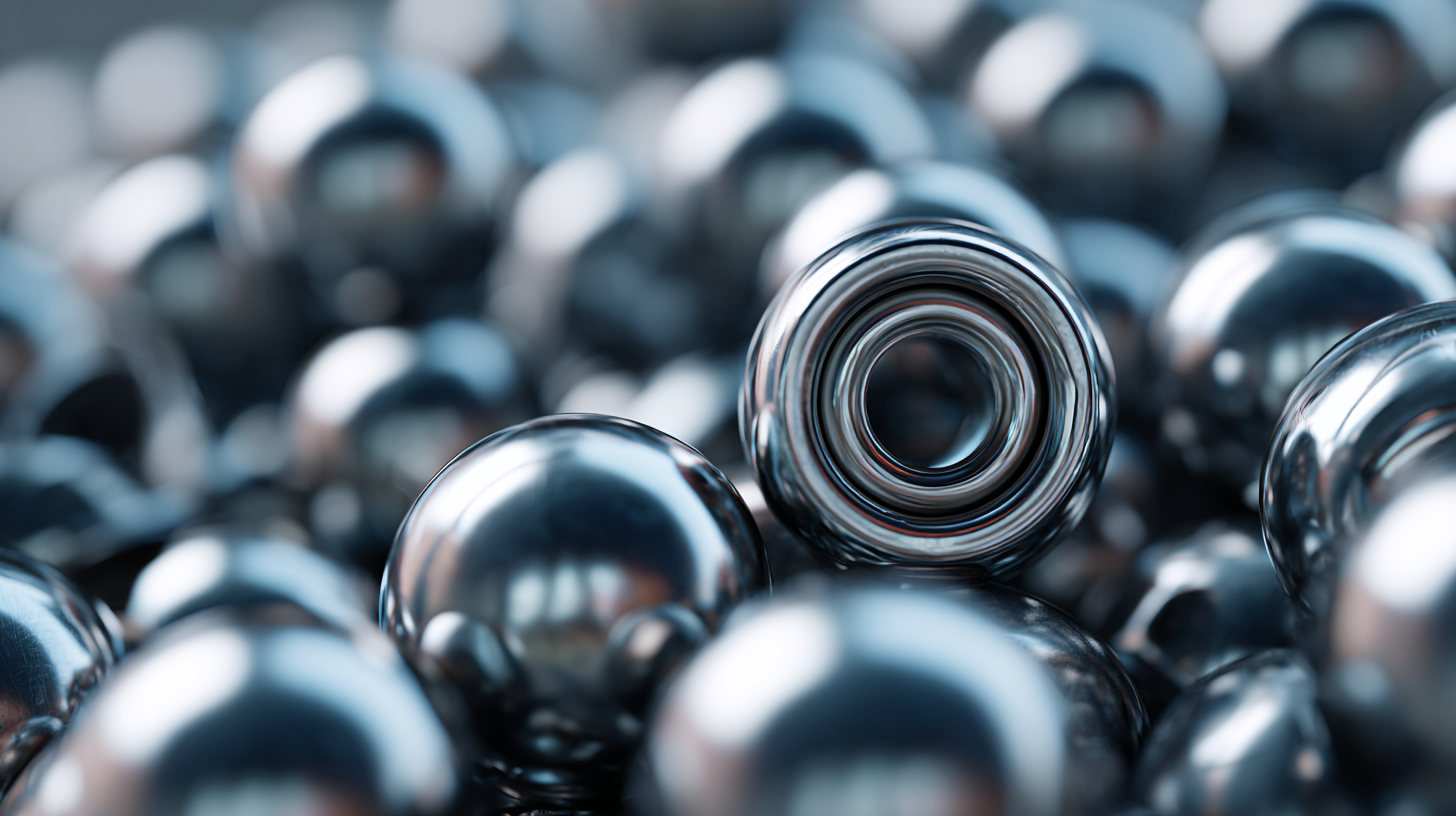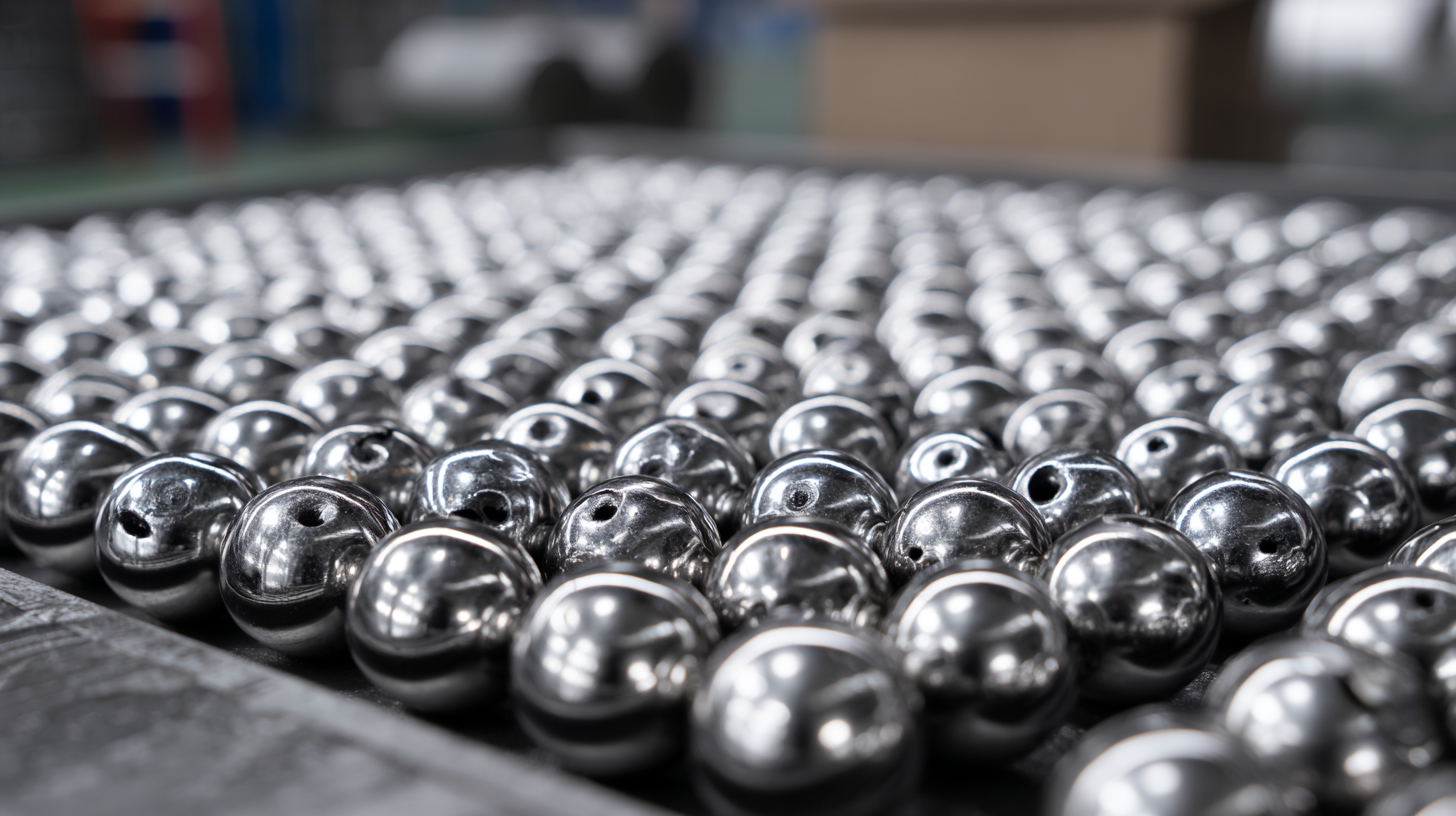
In the increasingly interconnected global supply chain, the demand for high-quality Bearing Steel Balls has surged, driven by the expansion of industries such as automotive, aerospace, and manufacturing. According to a recent market research report by Global Industry Analysts, the bearing market is projected to reach $120 billion by 2027, with a significant portion attributable to steel ball bearings, which are integral to the performance and durability of various machinery. However, as traditional manufacturing routes face challenges like fluctuating raw material costs and environmental concerns, the industry is turning to innovative alternatives. These alternatives not only promise improved performance but also address sustainability issues while maintaining competitive pricing. As manufacturers and designers seek solutions that meet both operational and ecological standards, exploring these innovative approaches to Bearing Steel Balls becomes crucial for staying ahead in the market.

The landscape of bearing steel ball production is undergoing a significant transformation, largely driven by the adoption of innovative materials and technologies that prioritize sustainability. As the industry pivots toward eco-friendly solutions, manufacturers are increasingly exploring sustainable materials, like those developed by NRB Bearings. This shift not only addresses environmental concerns but also enhances the performance and longevity of bearing products.
By harnessing hybrid technologies, companies can produce bearings that meet the growing demands of high-speed applications while adhering to green manufacturing principles.
In the realm of advanced manufacturing, the integration of smart technologies is reshaping production processes. Reports indicate that the global market for electric vehicle bearings is set to expand significantly from 2025 to 2034, driven by the surging demand for cleaner transportation options. Manufacturers are responding by localizing production and focusing on precision, particularly with innovations such as ceramic ball bearings tailored for electric vehicles.
Furthermore, recent advancements in heat treatment methods for steel have shown promising results, improving the hardness and stability of bearing components, which is crucial for their performance in demanding applications. This emphasis on innovative materials is not only enhancing efficiency but also propelling a green transformation across the bearing industry.
In today’s rapidly evolving global supply chain, the integration of advanced manufacturing technologies plays a pivotal role in enhancing the performance of production processes, particularly for products like bearing steel balls. These technologies, which include automation, additive manufacturing, and digital twin simulations, enable manufacturers to optimize their operations, reduce waste, and ensure precision in the production of high-quality steel balls. By leveraging smart manufacturing systems, companies can quickly adapt to market demands, leading to more resilient and responsive supply chains.
Moreover, the use of advanced data analytics allows manufacturers to gain insights into the entire supply chain, from raw material acquisition to final product delivery. This facilitates better forecasting and inventory management, ensuring that the right amount of bearing steel balls is produced at the right time. As manufacturers embrace these innovative technologies, they not only enhance their competitive edge but also contribute to a more sustainable supply chain by minimizing resource consumption and reducing environmental impact. The future of bearing steel ball production lies in the continuous adoption of these advancements, revolutionizing the industry.
In recent years, the search for sustainable alternatives to traditional bearing steel balls has gained significant momentum in the global supply chain. These alternatives not only address the increasing demand for environmentally friendly materials but also ensure high performance and durability. Innovations in materials such as ceramic and composite bearings have emerged as viable options, offering reduced weight and increased resistance to corrosion and wear, which ultimately contribute to longer lifespans and lower maintenance costs.
Moreover, the use of recycled and bio-based materials in the production of bearing steel balls has further enhanced sustainability efforts. Companies are increasingly adopting circular economy principles, focusing on reducing waste and reusing materials in their manufacturing processes. As the industry shifts towards greener practices, it’s essential to recognize the role of technological advancements in driving this change, paving the way for a more sustainable future while meeting the demands of various applications where bearing steel balls are critical. The collaboration between manufacturers and researchers will continue to play a vital role in developing innovative solutions that prioritize sustainability without compromising performance.
As the global supply chain continues to evolve, the adoption of innovative bearing materials is being driven by several key factors. Manufacturers are increasingly seeking alternatives to traditional steel ball bearings in their quest for enhanced performance and durability. Factors such as weight reduction, increased corrosion resistance, and the ability to withstand extreme temperatures are paramount. These considerations not only improve the efficiency of machinery but also extend the lifespan of components, resulting in lower maintenance costs.

When exploring new bearing materials, it’s essential to consider the specific requirements of your applications. For instance, ceramic bearings are renowned for their low friction and high hardness, making them ideal for high-speed applications. On the other hand, polymer-based bearings offer excellent chemical resistance and are suitable for environments where lubrication is challenging.
Tip: Always assess the operational environment and loading conditions when selecting a bearing material. Engaging with suppliers to discuss the specific performance metrics needed can ensure that you choose the best alternative for your application. A well-informed decision can lead to substantial improvements in performance and reliability.
The global supply chain for bearing steel balls has undergone significant transformation, prompting a comparative analysis between traditional and alternative materials. Traditionally, bearing steel balls are manufactured from high carbon chromium steel, known for its durability and resistance to wear. According to a 2022 report by the Research Institute for Industrial Technologies, traditional steel balls account for approximately 70% of the market due to their proven performance and established manufacturing processes.
 However, the rise of alternative materials is challenging this dominance. For instance, ceramic balls made from silicon nitride are gaining traction, offering benefits such as lower density and higher corrosion resistance. A study published by the International Journal of Materials Science in 2023 highlights that ceramic balls can extend bearing life by up to 30% compared to their steel counterparts under certain conditions. Additionally, polymer-based bearing balls are emerging as lightweight and cost-effective options, appealing particularly to industries focused on reducing carbon footprints. As the demand for sustainability increases, the transition to these innovative alternatives could reshape the landscape of the bearing ball industry significantly.
However, the rise of alternative materials is challenging this dominance. For instance, ceramic balls made from silicon nitride are gaining traction, offering benefits such as lower density and higher corrosion resistance. A study published by the International Journal of Materials Science in 2023 highlights that ceramic balls can extend bearing life by up to 30% compared to their steel counterparts under certain conditions. Additionally, polymer-based bearing balls are emerging as lightweight and cost-effective options, appealing particularly to industries focused on reducing carbon footprints. As the demand for sustainability increases, the transition to these innovative alternatives could reshape the landscape of the bearing ball industry significantly.
